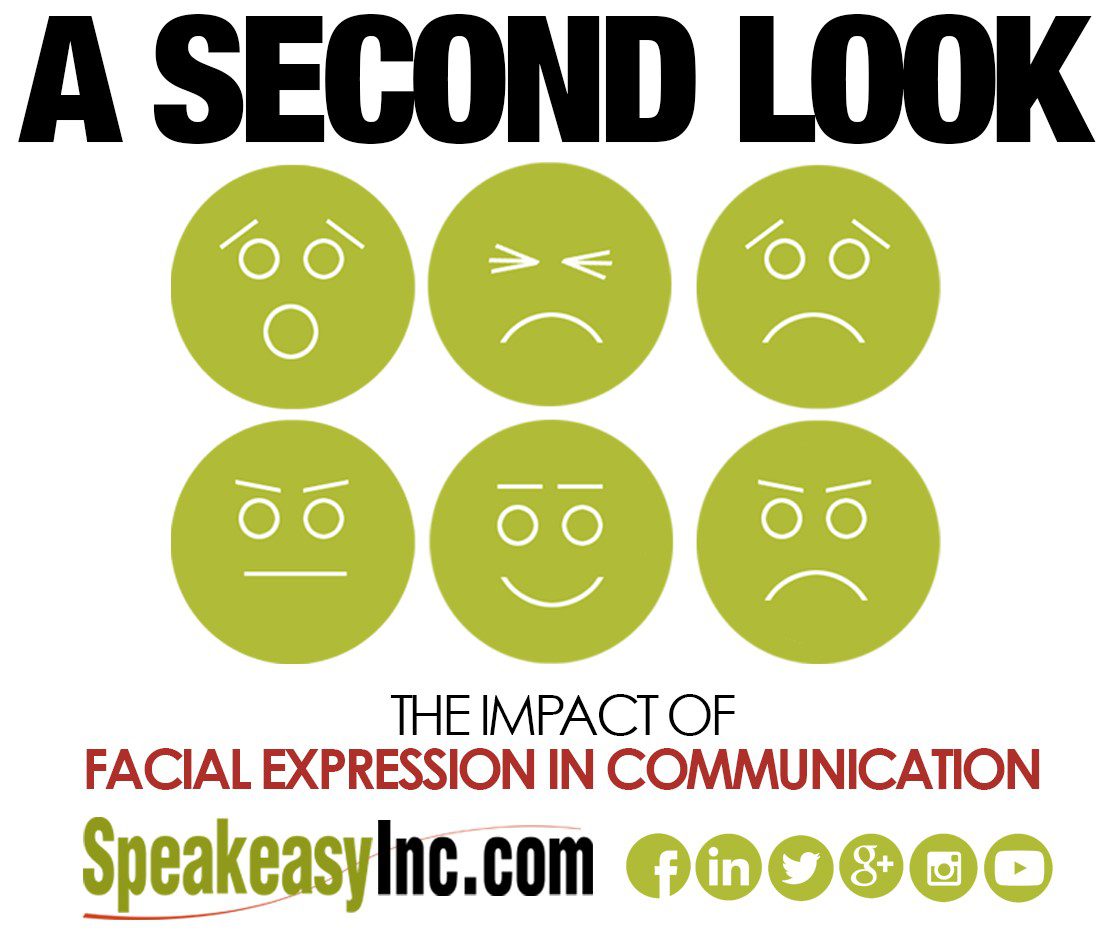
30 Aug The Impact of Facial Expression in Communication
Reading Time: 2 minutesWhat you actually say when you communicate begins long before you open your mouth, and continues after you’ve finished speaking. The human face is extremely expressive – able to communicate countless emotions without saying a word. And unlike some forms of nonverbal communication, the emotions shared through facial expressions are universal. (See Part 1 for the seven specific emotions).
Watch someone reading the paper or looking at their phone, you might easily make assumptions about their feelings toward the subject on the other end. Do they agree, disagree or feel excitement or despair? Our face – both voluntarily and involuntarily – conveys emotion and some of it is hard to hide. This involuntary messaging often becomes the obstacle to our intended message and can even at times be in conflict with our spoken word. Speakeasy Instructors pinpoint two aspects of facial expressions to consider for greater control over our communication: micro expressions and your natural range of displayed emotions.
Micro expressions are brief, involuntary facial expressions that usually occur in high-stake, stressful situations. They happen when a person is consciously trying to conceal how they are feeling, or when a person does not consciously know how they are feeling. And, unlike regular facial expressions, they are almost impossible to hide. In a new study, researchers defined 21 facial expressions used to convey our emotions and found a computer model could tell them apart with a high degree of accuracy.1 This suggests that while you can’t mask some expressions, you can proactively use your face to deepen your connection to others when you speak.
Knowing what your facial expressions can communicate is one thing but learning to use them to your advantage is another. Look for emotion on the faces of others, learn to recognize what their expressions communicate to you, and then practice coupling those expressions with the words and emotions you want to convey. Watch your favorite Netflix film on mute and you’ll be amazed how much you can follow from the non-verbal clues provided by your characters facial expressions.
Since we aren’t all Hollywood actors, some of us have to work harder to display more than our few “go to” emotions. Use your phone to practice and don’t be afraid of exaggeration – at least in the beginning. Record yourself and then –try to quell your initial discomfort — watch it without the volume. What seems silly to the internal you, is likely nowhere near as shocking when you play the clip back on mute. The key – as with all communication – is to be authentic. Know what you want to communicate, believe in your own authority and point of view, and then… deliver, with your words and with your face.
Like any other communication tool, using facial expression takes experimentation, practice and work. Simply thinking about the trifecta of facial expressions combined with thoughtful content and authentic delivery will move your conversations beyond simple communication to building real connection with the people most important to your success.

